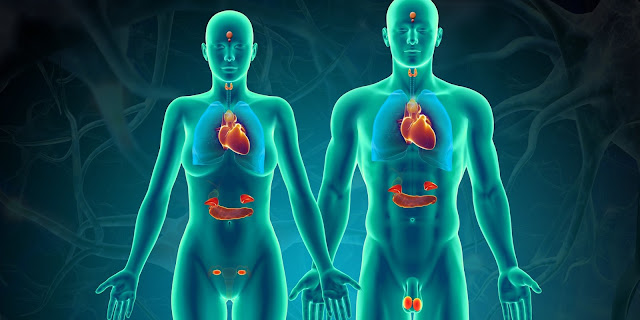Materiovigilance: Ensuring Safety of Medical Devices
Medical devices play an important role in diagnosis, treatment and management of diseases. From simple thermometers to advanced pacemakers and MRI machines, these devices have helped improve patient care and outcome. However, with the growing complexity of medical technologies, ensuring their safety throughout the product lifecycle has become imperative. This is where materiovigilance plays a crucial role.
What is Materiovigilance?
Materiovigilance
refers to a post-market surveillance system for collecting and monitoring
information from healthcare facilities on incidents related to medical devices.
The primary goal is to detect, assess, understand and prevent adverse events or
near misses pertaining to medical equipment. It works as an early warning
system to address potential safety issues with devices.
The term 'materiovigilance' was coined in France in the 1990s and is now being adopted globally to strengthen oversight over medical devices. Countries like the United States, United Kingdom, Australia and others have established robust materiovigilance programs to continuously monitor devices in real-world clinical settings after they have received marketing authorization.
Components of an Effective Materiovigilance System
A strong materiovigilance system incorporates the following elements:
Incident Reporting Mechanism: This is the core component which allows
healthcare professionals, patients and others to report any adverse incidents,
device deficiencies or malfunctions. Most countries have online reporting
portals to streamline the process.
Incident Investigation: Thorough investigation of all critical incidents is
conducted to determine the root cause - whether it was due to a device failure,
user error or other reasons. Investigations may involve retrieving and
examining the problematic device.
Risk Assessment: The risks associated with reported incidents are
systematically evaluated based on their severity, frequency of occurrence and
likelihood of reoccurrence. This helps prioritize problem resolution.
Corrective and Preventive Actions: Once risks are identified, manufacturers are
responsible for taking appropriate corrective actions like issuing field safety
notices, recalls or modified instructions. Preventive measures also help
address potential issues proactively.
Data Analysis: Aggregate data on reported incidents is analyzed to detect any
emerging trends or patterns. Analysis helps uncover previously unknown risks
and take a more long term corrective approach.
Vigilance involves coordination between regulatory authorities, healthcare
facilities, industry and other stakeholders for continuous safety monitoring of
devices in clinical practice. Timely identification and mitigation of risks
helps improve clinical outcomes.
An Illustration of Materiovigilance in Action
Let us understand how a materiovigilance program would function through a
hypothetical example:
A hospital notices that one of their ultrasound machines is intermittently
failing to display images properly. The biomedical team rules out any internal
issues with the machine. As a prudent measure, they submit a report on the
manufacturer's online portal describing the problem.
The manufacturer's vigilance group acknowledges receipt of the report. They
conduct a field investigation to retrieve diagnostic data from the machine.
Analysis reveals a software glitch affecting image rendering. Being a critical
device, the manufacturer issues an urgent field safety notice to update the
software on all such machines to prevent patient harm.
Meanwhile, two more similar reports are received from other hospitals using the
same model. The vigilance group quickly determines this to be aClass I recall
level issue based on its potential to directly impactdiagnosis. An intensive
corrective campaign is launched involving software updates across multiple
hospitals and geographies.
Continuous monitoring through the post-market surveillance system helped
identify and resolve the issue proactively before any serious adverse incidents
occurred. This effectively demonstrates how materiovigilance strengthens
medical device safety for patients.
The Strength of a Nationwide Materiovigilance Program
Coordinated materiovigilance efforts through national programs have significant
benefits:
- Centralized Data Repository: A unified database of all incident reports aids
comprehensive risk trend analysiscovering the entire country.
- Standardized Protocols: Common reporting tools and investigation SOPs
facilitate seamless exchangeof safety data and coordination between
stakeholders.
- Central Oversight: Regulatory authorities can timely detect potential
problems, effectively monitor corrective actions and ensure post-market
commitments are fulfilled.
- Industry Participation: Active industry cooperation helps address
emergingsafety issues across product portfolios through GMP oversightand
mandatory reporting.
- Patient Welfare: A nationwide network of reporting healthcare facilities
improves patient protections byresolving issues that could otherwise remain
localized.
- Global Learning: Incident data shared with international regulatorsenables
leveragingglobal experiences to continuously strengthen local vigilance
systems.
India established its Materiovigilance Program of India (MDVPI) in 2019 to
institutionalize such unifiedsafety monitoringof medical devices. It aims to
make the country's fast growing healthcare sector global benchmark in effective
post-marketing oversightto ensure benefits outweigh risks.
Conclusion
As new technologies transform medical practice, the need for robust
materiovigilance will continue rising to balance innovation with safety.
Countries must invest in building institutional capacities for real-time risk
surveillance, analysis and management. With multi-stakeholder coordination,
these programs can play a seminal role in strengthening health systems by
facilitating availability of therapies while protecting patients.
Get More Insights On Materiovigilance




Comments
Post a Comment